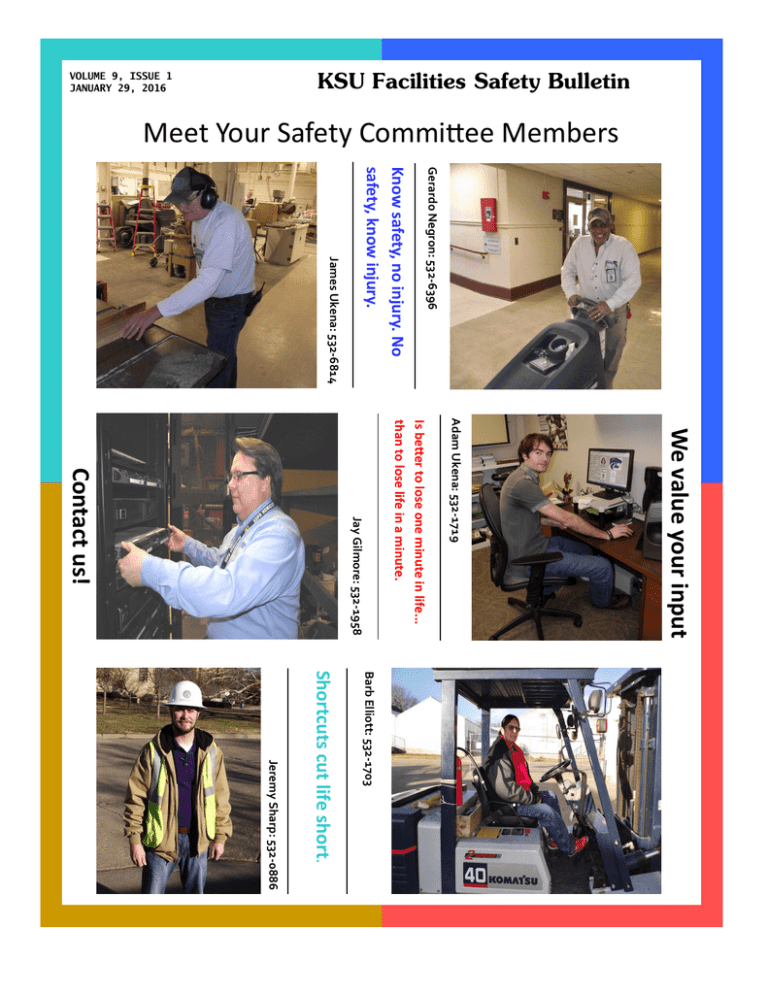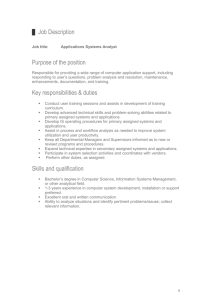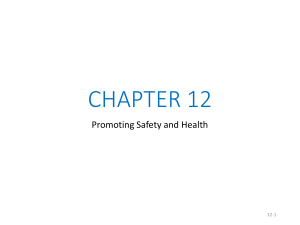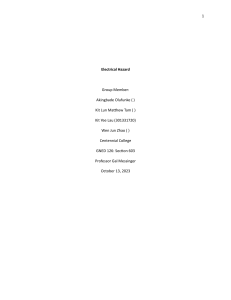KSU Facilities Safety Bulletin Meet Your Safety Committee Members Short cu
advertisement

KSU Facilities Safety Bulletin VOLUME 9, ISSUE 1 JANUARY 29, 2016 Meet Your Safety Committee Members Gerardo Negron: 532-6396 Know safety, no injury. No safety, know injury. James Ukena: 532-6814 We value your input Adam Ukena: 532-1719 Is better to lose one minute in life... than to lose life in a minute. Jay Gilmore: 532-1958 Contact us! Barb Elliott: 532-1703 Shortcuts cut life short. Jeremy Sharp: 532-0886 Safety Committee Meetings Purpose and Duties Safety Committees should be established for the following purposes: 1. To promote and maintain the interest of employees in health and safety issues. 2. To educate managers, supervisors and employees through awareness and training activities that they are primarily responsible for the prevention of workplace accidents. 3. To help make health and safety activities an integral part of the organization's operating procedures, culture and programs. 4. To provide an opportunity for the free discussion of health and safety problems and possible solutions. 5. To inform and educate employees and supervisors about health and safety issues, new standards, research findings, etc. 6. To help reduce the risk of workplace injuries and illnesses. 7. To help insure compliance with federal and state health and safety standards. Typical Duties of a Committee: 1. Report unsafe conditions and suggest corrective actions. 2. Meet at least monthly; less frequently for smaller departments or operations, but at least be quarterly. 3. Clearly define the duties and responsibilities of officers and members. 4. Review incidents, near misses, Supervisor’s Accident Investigation Reports, claim summaries and loss analysis on a periodic basis. 5. Review all serious injuries. Not for faultfinding, but for fact finding to prevent a re-occurrence of the same or similar incident. 6. Contribute ideas and suggestions for improvements in safety. 7. Work safely and influence others to work safely. 8. Make periodic facility safety audits. 9. Sponsor and coordinate contests, poster programs, safety drives; etc., and supply other informational materials which can help to promote safer operations. 10. Develop, implement, and review written safety programs. 11. Build enthusiasm for safety programs. 12. Direct involvement with organizational wide safety training. 13. Establish dispute resolution procedures. 14. Propose and create safety checklists. 15. Identifying high-risk job tasks and developing written safe operating procedures. 16. Set Goals short and long term. Must be measurable and achievable. Monitor for effectiveness. Referenced: MDOL




